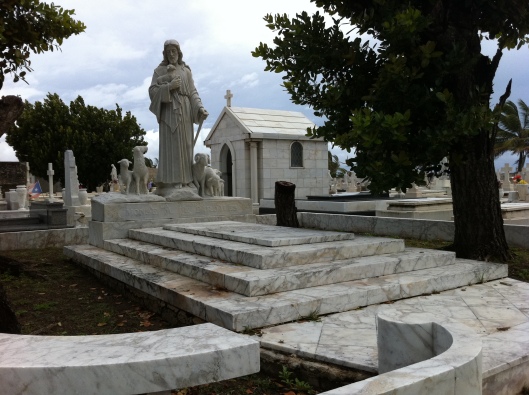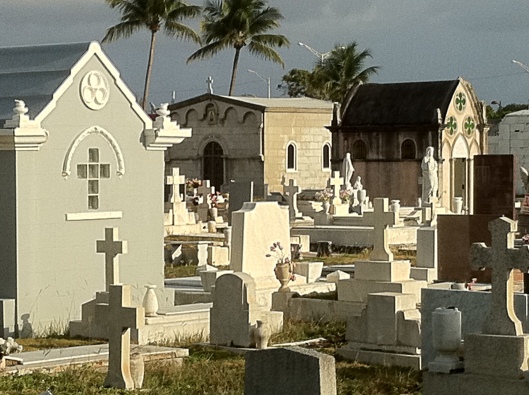Peanut Butter and Jelly. Batman and Robin. Bacon and Eggs. Those are pairings that just make sense.
But airplanes and tombstones don’t. Not usually.
Hartsfield-Jackson International Airport is what most people think of when you mention Atlanta (hopefully it’s not those trashy TV housewives). Just about everybody can say they’ve been through Atlanta because of it, even if they never left the building. They don’t call it the World’s Busiest Airport for nothing.
Amid great hoopla in 2001, construction of a new fifth runway began. The final cost was around $1.28 billion dollars. Completed in 2006, it involved enough fill dirt (in some places) to reach 11 stories high. That fill dirt has its own whiff of scandal attached to it, but I digress.
By putting in that runway, what little was left of the Flat Rock community that sat on that property was erased. Fortunately, two cemeteries with deep roots in that area were kept intact. While they both look drastically different, not a single grave was disturbed.
Hart Cemetery was established in 1860 with the burial of Ellender “Nellie” Brown Hart (1822-1860). According to long-time community member Melba Daily, the story of the cemetery’s founding goes like this (from a 2008 Clayton Daily News article):
“My great-grandfather and great-grandmother (John Jay Hart and Ellender Brown-Hart) were walking on their property one Sunday and when they got to that spot, she said, ‘This is where I want to be buried some day,’ and she became the first person buried there.”
“It’s very hard to go there and picture where buildings were, because there’s all those embankments they built for the runways,” said Tommy Jones. His grandmother, Jewel Hart, lived in the Flat Rock community. An embankment for a taxiway is now located on the spot where his grandmother’s house stood. “It’s very interesting how Hartsfield grew and eventually overran the community.”
He’s being kinder than I would be if someone bulldozed my grandmother’s house to put in a runway.
My mother worked for the Delta Employees Credit Union for 15 years. I frequently drove to the airport from Fayetteville and passed through this area, although I had never visited the cemeteries. So when I was recently over that way, I decided it was time to do so.
A sign on Riverdale Road directs you down the short road to the bottom of a deep embankment. The front of the cemetery is bordered by a white picket fence and landscaped with bushes. A sign details the history of the cemetery and lists every person thought to be buried there.

This areal view of the airport runways shows the location of both cemeteries, the black arrow runs between them. Hart is on the lower left and Flat Rock is on the upper right. (Photo Source: Google)
When the archeological study was done on Hart Cemetery in 1995, they discovered 83 graves were buried there. Only 16 had any kind of inscribed marker. A number of them are marked with simple field stones. Two giant magnolias stand watch over them.
It feels somewhat desolate there. The incessant spring and summer rains have left the ground muddy and rough. An island of land suspended in time among rising green mounds, with the whine of jumbo jets flying overhead, it is a surreal atmosphere. One that left me feeling empathy for those with loved ones there. Yes, it was kept intact. But it will never be the same.
Flat Rock Cemetery is located deeper within the labyrinth of airport roads (see map above). The cemetery sits amid the cacophony of rumbling cement trucks, speeding tractor trailers and various aircraft overhead. With over 300 graves (most with markers), Flat Rock Cemetery feels more natural than Hart Cemetery, if that’s possible. It’s a grassy plot of land that is tended fairly well. Someone was mowing the grass on the far side of the property during my visit.

Then you look in this direction and see the concrete plant. That’s when you realize things have changed quite a bit.
History has it that John Hart (mentioned previously) and his second wife, Elizabeth, helped establish Flat Rock Baptist Church in the 1870s. Although Flat Rock was never a Primitive Baptist congregation, they met in a plain building in the tradition of the Primitive Baptists, devoid of ornament or religious pretension. It was built with two entrances, each approached by three wooden steps with no landing. It’s not known if they were ever used to divide the sexes.

Flat Rock Baptist Church in the 1940s. Notice the two different entrances. (Photo Source: Tomitronics.com)
As the Atlanta airport expanded and I-285 was built in the 1960s, much of the old Flat Rock community was destroyed. By the 1970s, the congregation was looking to relocate. They sold the property to the airport authority in 1979 and re-established themselves as National Heights Baptist Church. The church and Sunday School building were still used by various airport agencies before being abandoned, then finally torn down in 1996.
The cemetery is still active. I was able to take a photo for Find a Grave that was for a burial in 2012. There’s a good bit of space available. Several descendants of the Hart family (and others with kin who grew up there) still live close to the Flat Rock area. I’m willing to bet some of them will be buried there when the time comes.
It’s comforting to know that these two cemeteries remain intact. Other cemeteries have met much sadder fates. In 1956, Monument Cemetery in Philadelphia was pretty much wiped out, most of the graves destroyed. Why? To add a new parking lot to Temple University. It’s a heartbreaking story.
At the same time, it’s a situation that leaves me torn. I only know that I’m glad my loved ones aren’t buried directly beneath some airplane’s flight path, silent witnesses to hundreds of unknowing travelers.
Melba Dailey put it this way, “”I just can’t bear to look at the area now. It doesn’t look the same at all. When we drive to the cemetery, I just close my eyes until we get there.”
I think I’d feel exactly the same way.





































